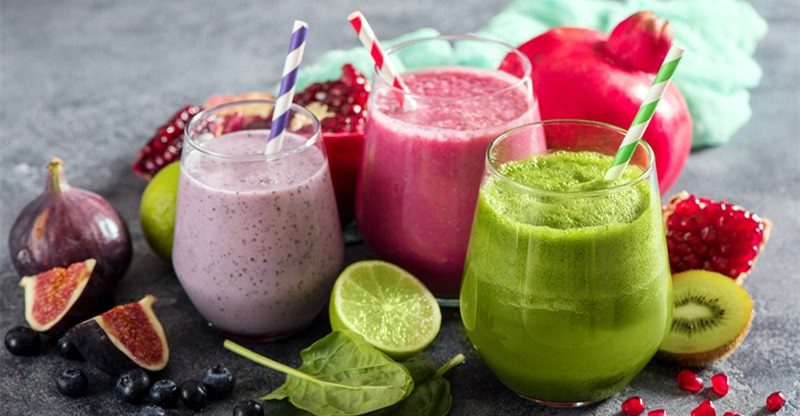Why Your Smoothies Are Losing Their Flavor and How to Fix It
Smoothies are a great and convenient way to pack essential nutrients into your diet. However, if you’ve noticed your once vibrant concoctions are starting to taste bland. There are several reasons why this may be happening, and luckily, there are easy ways to fix it!
Poor Quality or Overripe Ingredients
Why it’s a problem: Overripe, damaged, or poor-quality fruits and vegetables can lead to a bland and unappetizing smoothie. As produce ripens, their flavors become more intense. Overripe fruits in particular, often have a muted or dull taste that can negatively impact your smoothie.
How to fix it: Always select fresh, in-season fruits and vegetables for your smoothies. Go for ripe but not overripe produce, and pay attention to the quality. Farmers’ markets are an excellent source of fresh, delicious ingredients.
Not Enough Flavor Variety
Why it’s a problem: Smoothies usually feature a base of fruit, but that doesn’t mean you have to stick with the same old ingredients every time you blend up a batch.
How to fix it: Add some spices like cinnamon or nutmeg for just a hint of flavor that will add depth to your smoothie without overwhelming it. You can also try adding nuts for texture, or even some chopped veggies for more nutrition.
Over-Dilution
Why it’s a problem: Adding too much water, ice, or other liquid ingredients can cause a decrease in flavor intensity and result in a watery, tasteless smoothie.
How to fix it: If you don’t want to spend money on more expensive fruit, try adding less yogurt or milk and more ice. This will give you a thicker smoothie with less liquid — which means more flavor! You can also add liquids sparingly, such as a 1:3 ratio of liquid to solid ingredients. You can always add more liquid if necessary.
Ice
Why it’s a problem: While ice can provide a refreshing chill, it can also dilute and mute the flavors of your smoothie.
How to fix it: Instead of ice, use frozen fruits to achieve a cold, thick texture without watering down the flavor. If you opt to use ice, reduce the amount and compensate with flavorful liquid ingredients such as juice or milk.
Lack of Sweetness
Why it’s a problem: Not enough natural sweetness in your smoothie can result in a bland final product.
How to fix it: If your fruits aren’t sweet enough, add natural sweeteners such as honey, agave nectar, or a few drops of liquid stevia. Aim for just enough sweetness to enhance the flavors without overpowering them.
Lack of Acid
Why it’s a problem: Acidic ingredients help brighten flavors and enhance the taste of a smoothie but are often overlooked.
How to fix it: Add a splash of lemon, lime, or orange juice to balance the sweetness and elevate the overall flavor. A small amount of yogurt or a few teaspoons of apple cider vinegar can also help to provide a tangy punch.
Using The Wrong Type of Proteins
Why it’s a problem: The most common mistake people make with protein powder is using it in a smoothie that doesn’t require any extra protein. Many people add protein powder to their smoothies simply because they think it will make them healthier, but often the extra calories and fat just make the smoothie less healthy.
Some protein powders come with their own flavor, which might not blend well with the taste of fruits and vegetables you’re using. This tends to overpower the natural flavors, leading to a less than ideal taste.
How to fix it: Opt for neutral or flavorless protein powders so they don’t interfere with your smoothie’s taste. Alternatively, select proteins that complement your smoothie’s flavors. For instance, a vanilla-flavored protein could blend well with a banana-based smoothie.
Neglecting the Power of Nut Butters
Why it’s a problem: Neglecting to add nut butter may result in a loss of depth in your smoothie’s taste. Nut butter adds creaminess and a bold, more rounded taste to smoothies.
How to fix it: Nut butters like cashew butter or sunflower seed butter add a subtle richness to smoothies that other nut butters don’t have. They also have a lower fat content than peanut butter, so they’re better for you if you’re watching your weight.
Absence of Salt
Why it’s a problem: Just like in any culinary preparation, the lack of a small amount of salt can lead to a flat or dull tasting smoothie, as salt can enhance and balance smoothie flavors.
How to fix it: A pinch of good-quality sea salt or Himalayan pink salt can elevate the flavor profile of your smoothie without making it salty. It will help to enhance the sweetness and other flavor notes.
Not Letting Ingredients Marinate
Why it’s a problem: If you blend your ingredients together right away, you may miss out on a deeper integration of flavors.
How to fix it: Let your ingredients sit together in the refrigerator for a few hours or overnight before blending. This allows flavors to mellow and combine, creating a more tasty and flavorful smoothie.
Overthinking the Recipe
Why it’s a problem: Overcomplicating the recipe with too many ingredients can result in a muddled flavor profile where no one taste stands out.
How to fix it: Keep your recipe simple. Choose a few main ingredients and stick to them. You can create numerous delicious and varied smoothies using only three or four components.
Bottom Line
In blending smoothies, a little creativity goes a long way. By addressing these common pitfalls and experimenting with new flavors, you can revitalize your daily blend and ensure that each sip is a burst of delicious goodness.
So, let’s raise our blenders to a tastier, more exciting smoothie experience!



